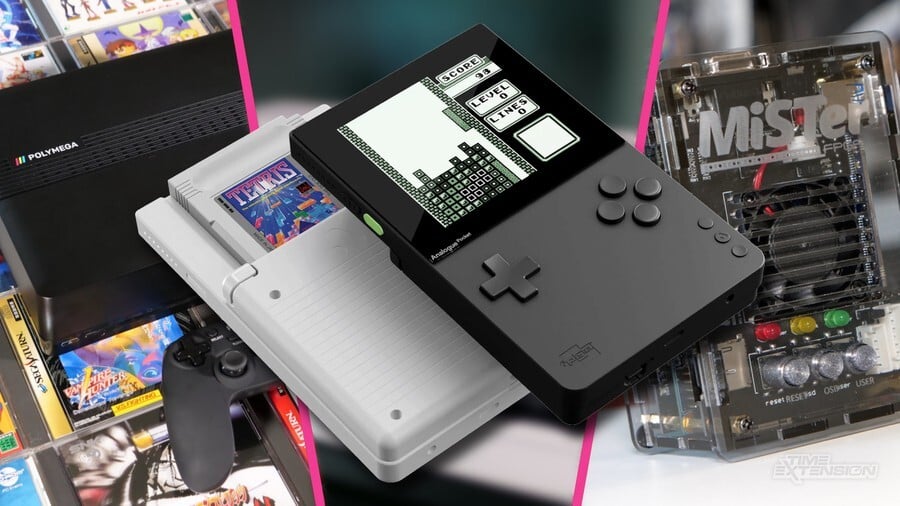
If you're a fan of classic gaming (and you should be, given the remit of this site), you've arguably never had it better. There are a multitude of options available if you love to experience retro games, and these aren't just limited to buying the original hardware and software.
There are brand-new systems which replicate the performance of your favourite console, allowing you to use original cartridges and controllers without having to jump through hoops to get things connected to your flatscreen TV. There are also handheld emulation devices which grant access to decades of gaming history while you're on the move. And then, of course, there's the flood of officially-sanction micro-consoles which come pre-loaded with classic titles and try to be as faithful as possible to the real deal.
All of these options have their upsides and downsides, and not all of them will be suitable for everyone. Which of these options is the right one for you? In this guide, we hope to answer that very question.
Please note that some external links on this page are affiliate links, which means if you click them and make a purchase we may receive a small percentage of the sale. Please read our FTC Disclosure for more information.
Best Retro Gaming Systems: The Options
Mini / Micro Consoles
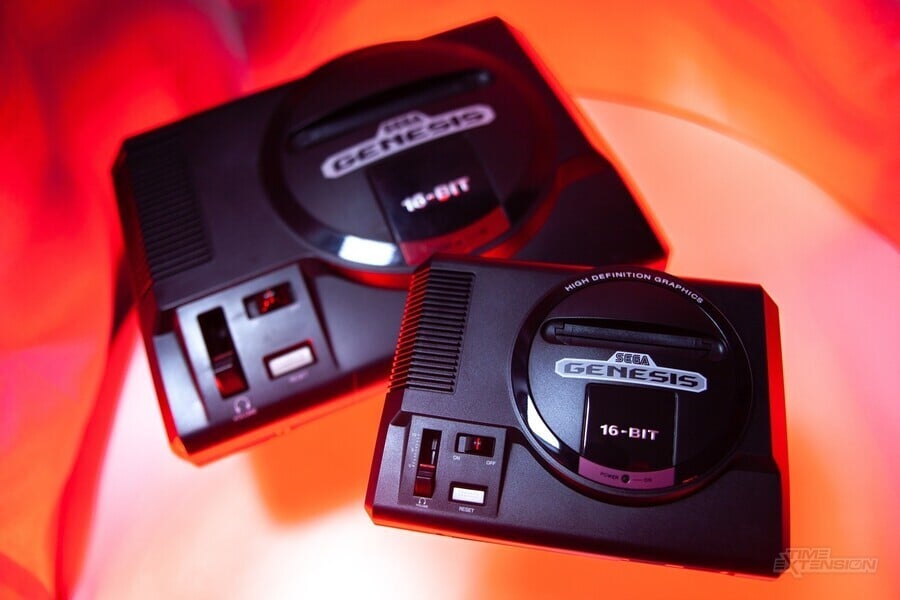
The notion of officially-licenced mini-systems isn't a new one – Sega teamed up with manufacturer AtGames ages ago to produce miniaturised versions of its Mega Drive / Genesis console – but it was arguably Nintendo's NES Classic Edition that really triggered the gold rush for this sector of the market. These machines are effectively scaled-down versions of the original hardware that ship with authentic controllers and come pre-loaded with games. They connect to your TV via an HDMI lead and are usually powered using a common Micro-USB connection.
More often than not, the guts inside these devices use cheap 'system on a chip' technology and the magic of software emulation; while the average person won't know the difference, hardcore players might detect slight inaccuracies when it comes to how games play, and there's likely to be more input latency than would be present when playing on original hardware. You can't use original cartridges with these devices, but some of them can be hacked so you can load up more games.
Since the NES Classic Edition arrived, we've seen the SNES Classic, Mega Drive Mini, A500 Mini and PC Engine Mini. We've also seen the likes of the Capcom Home Arcade and Neo Geo Arcade Stick Pro, both of which are a little too large to be considered 'mini' but are pretty much the same deal. In addition to these, we also have devices like the Neo Geo Mini, Astro City Mini, Astro City Mini V and Taito Egret II Mini which come with a built-in screen so they can be played away from the television.
Third-Party Emulation Home Consoles
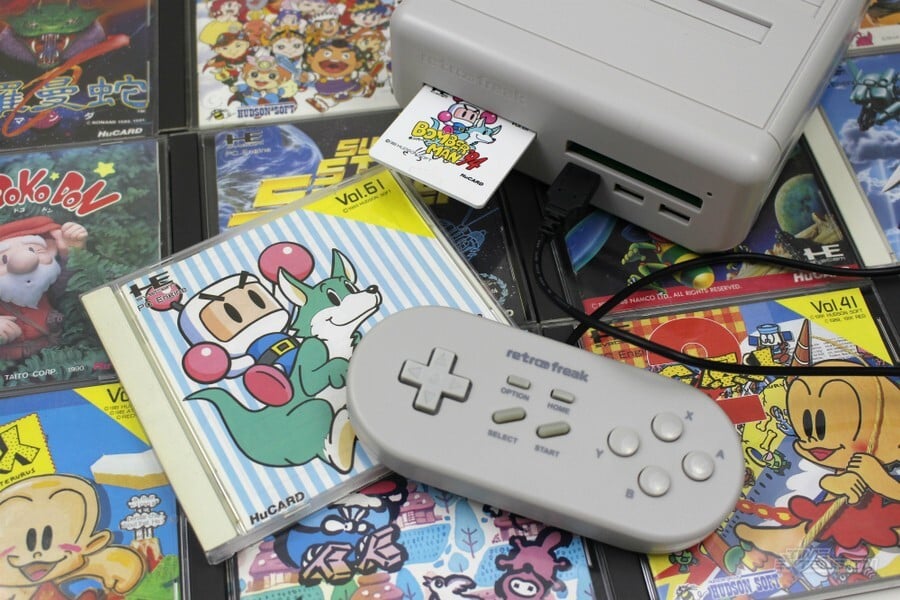
In the early days of the clone console industry, these third-party devices were all the rage. Using 'system on a chip' internals and software emulation, devices like the Retro Freak and Retron-5 allow you to use your original cartridges and controllers, bringing your existing library of games back to life. Modern comforts such as screen filters and save states make things even more accessible, and these devices almost always use HDMI connections (although some early examples rely on old-fashioned composite AV leads).
These devices have largely been superseded by more technically-advanced options, which means you might be able to pick them up cheaply on the secondary market today. If you're not too fussy about emulation accuracy or build quality, then a cheap, second-hand Retro Freak could just fit the bill for your retro needs.
Analogue Systems

Boutique hardware maker Analogue has carved out a solid reputation for creating high-quality clone systems which utilise FPGA technology to replicate the performance of classic systems on a hardware level. So far, Analogue has produced the Nt Mini (NES / Famicom), Super Nt (SNES / Super Famicom), Mega Sg (Mega Drive / Genesis) and Analogue Pocket (Game Boy / GBC / GBA / Game Gear / Lynx / Neo Geo Pocket), and it is currently hard at work on the Analogue Duo, which will tackle the TG-16 / PC Engine family of systems.
Because they use FPGA chips, Analogue's machines offer incredible accuracy and low latency, providing the best possible experience outside of using the original hardware. You can also use your original cartridges and controllers, and, because the hardware acts exactly like the real thing, you can also use flashcarts to unlock the full library of each system. AV options are also top-class, and Analogue releases regular firmware updates which add new features and functions to their systems.
On the downside, Analogue's systems are often quite expensive compared to the competition, and because they're produced in such small quantities, there's often a large wait after placing your order.
Polymega
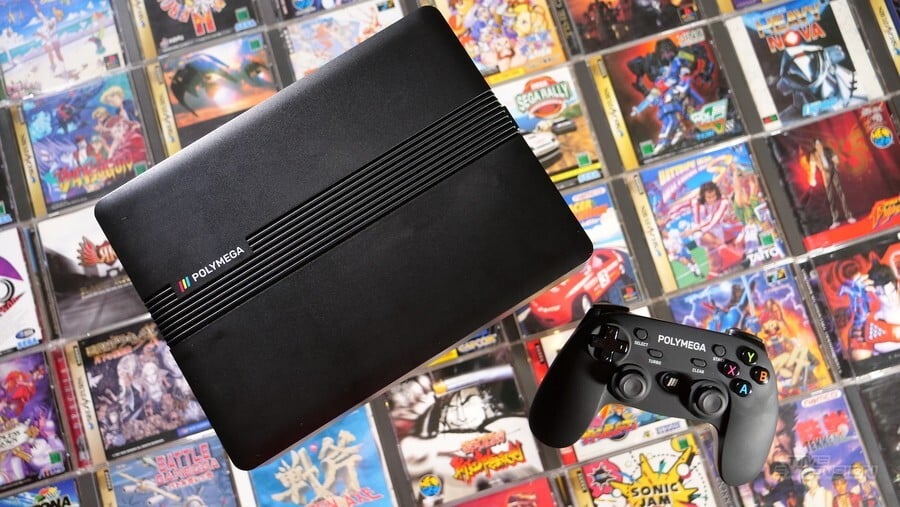
Polymega is a unique proposition in that it's a modular platform which supports a wide range of different systems – including CD-based consoles. Out of the box, the Polymega plays software for the PlayStation, Saturn, Sega CD, PC Engine / TG-16 CD and Neo Geo CD. The purchase of 'Element Modules' means you can unlock Mega Drive / Genesis, NES, SNES / Super Famicom and PC Engine / TG1-6 HuCards, and more modules are on the way (there's an N64 one in development right now).
This means you can use your original software and controllers (each module has controller ports), but there's an added bonus: the Polymega comes pre-loaded with a massive database of cover art, screenshots and descriptions for all of the supported consoles' libraries, and you can 'dump' games to internal storage so you don't need to have the cartridge or CD when you want to play – it's like iTunes for your games collection, basically. This makes Polymega a powerful platform for legitimately compiling your retro library. Even more exciting is that there are plans to add a digital store to the machine, allowing publishers and developers to put their old games up for sale.
The catch with Polymega is that it uses software emulation, and that means it's not quite as accurate as its FPGA-based rivals. Emulation is still excellent – especially for the Sega Saturn – but purists will take issue with the fact that it's not entirely faithful to the real thing. Input lag is around the same as you'd find with one of the official micro-consoles, like the SNES Classic Edition – not terrible, but not as good as Analogue's systems or the MiSTer. Another negative is that Playmaji, the company behind Polymega, has really struggled to get the machine into the hands of those who placed pre-orders years ago – although units are now flowing to customers on a fairly regular basis.
MiSTer
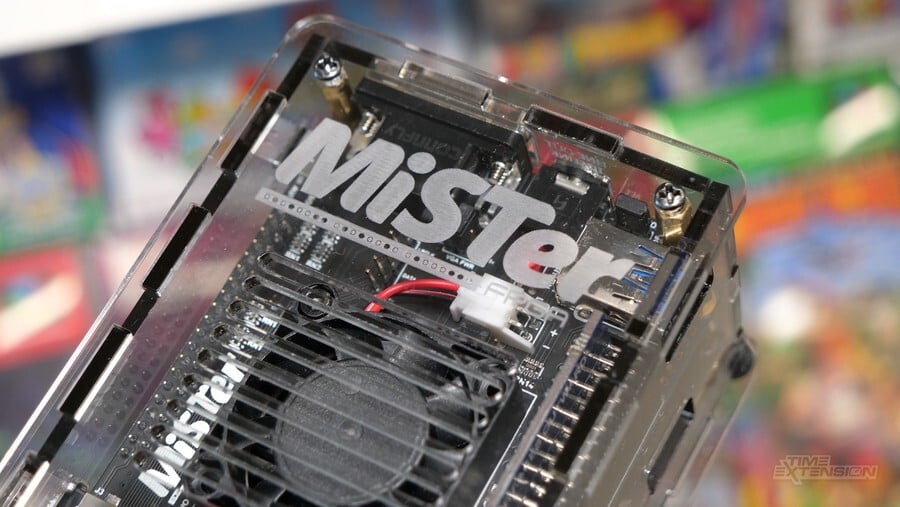
MiSTer is an open-source FPGA platform which has gathered a lot of momentum over the past few years thanks to the fact that the community around it is vast and wildly enthusiastic. The system requires quite a lot of effort to build and get running, making it one for serious retro gamers only – but once you get it sorted out, you've basically got one of the most authentic ways of playing classic games that money can buy.
FPGA cores – which allow the hardware to function exactly the same as original systems on a hardware level – are constantly in development, but MiSTer can currently replicate a dizzying number of consoles, handhelds, home computers and arcade machines. Because it's FPGA, latency is about as low as you can get without using the original machines, and there's support for a wide range of wired and wireless controllers.
Although cartridge adapters are available, most people use ROMs on their MiSTer, which obviously comes with certain legal issues – so, if you're a keen supporter of copyright, it might not sit well with you. It's also worth noting that the cores for consoles like the PlayStation and Saturn are still in the early stages of development.
Raspberry Pi
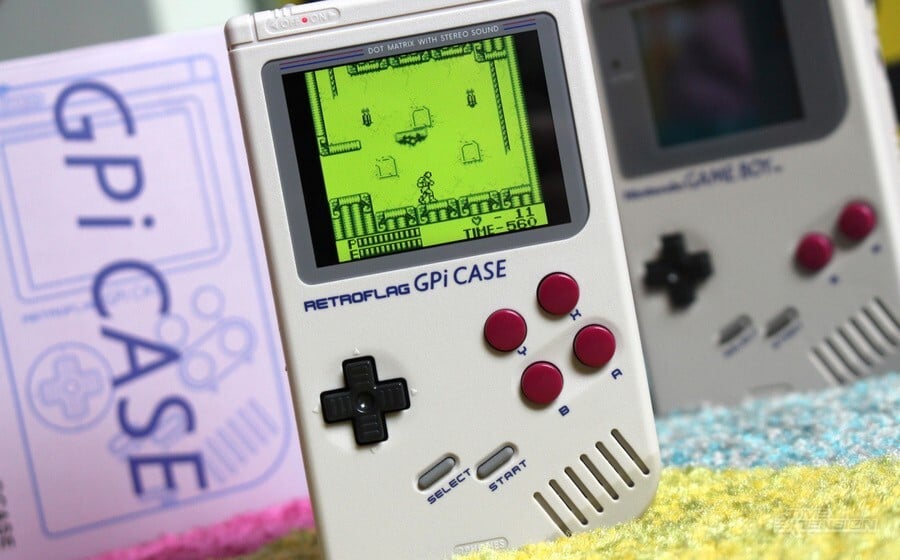
Before MiSTer arrived on the scene, a Raspberry Pi-powered gaming system was the way many people got their retro fix. Built around a cheap-but-powerful chipset, a Pi-packing system can emulate a wide range of systems on a budget, and this fact alone has ensured that this approach is still incredibly popular.
Sure, there's a little more work required to get it functioning as expected, but it's possible to get a pretty potent setup for under £100 / $100, all in – the same cannot be said of some of the other options on this list. The upgradeable nature of the setup means you can expand your device over time as more advanced parts become available.
The usual issues with software emulation apply here, of course, but for the vast majority of people, this will easily be good enough, and, like MiSTer, the community that has grown up around these devices is cooking up cool new stuff all of the time. For example, you can now create portable Raspberry Pi systems.
Evercade

Out of all of the options listed here, Evercade stands out from the crowd because it has its own dedicated range of cartridges. It all began with the Evercade handheld, a portable device which uses software emulation to run legal compendiums of retro games from companies such as Namco, Atari, Intellivision, The Bitmap Brothers and Codemasters. These curated collections come with full-colour manuals in clamshell packaging, which gets as close as possible to the authentic retail experience.
The Evercade was followed by the Evercade VS, a home console variant of the portable system which retained compatibility with the existing library of games. The next step in the evolution is the Evercade EXP, which launches later this year and will supersede the existing handheld version. All of these systems are reasonably priced when compared to the competition.
The Evercade library is packed with classics, and arcade titles have recently been added to the mix. Each pack is reasonably priced and offers weeks of entertainment, although it's worth noting that some of the collections have notable omissions. You can't side-load additional games onto the Evercade, which will be seen as a negative to some players.
Emulation Handhelds
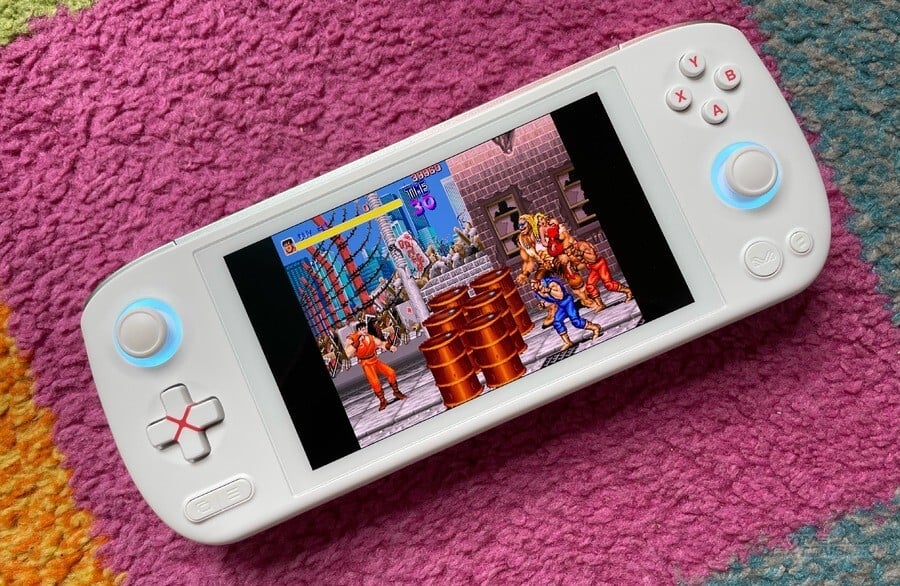
This category covers a wide range of options, ranging from cheap, pocket-sized emulation handhelds to portable PCs coming in at over £1000. Essentially, though, they're doing the same thing – using software emulation to play old games with proper physical controls.
At the lower end of the scale, you'll have dinky devices powered by cheap 'system on a chip' hardware that will have obvious limitations when it comes to the platforms it can emulate. At the upper end, there are products like the Aya Neo Air Pro which, because they're essentially PCs, can run pretty much any emulator imaginable. Somewhere in the middle are systems which use Android OS to offer a good balance between cost and power; companies such as Anbernic and Retroid produce multiple systems a year to cater to this demand.
The big upside to these emulation handhelds is that you're not tied to your television when you want to get your next retro gaming fix – but, as a bonus, many of these products offer TV-out functionality so that you can have the best of both worlds. The high turnover of devices means that your handheld can be outdated within six months, so expect to get buyer's remorse at least once if you take this route.
Original Hardware
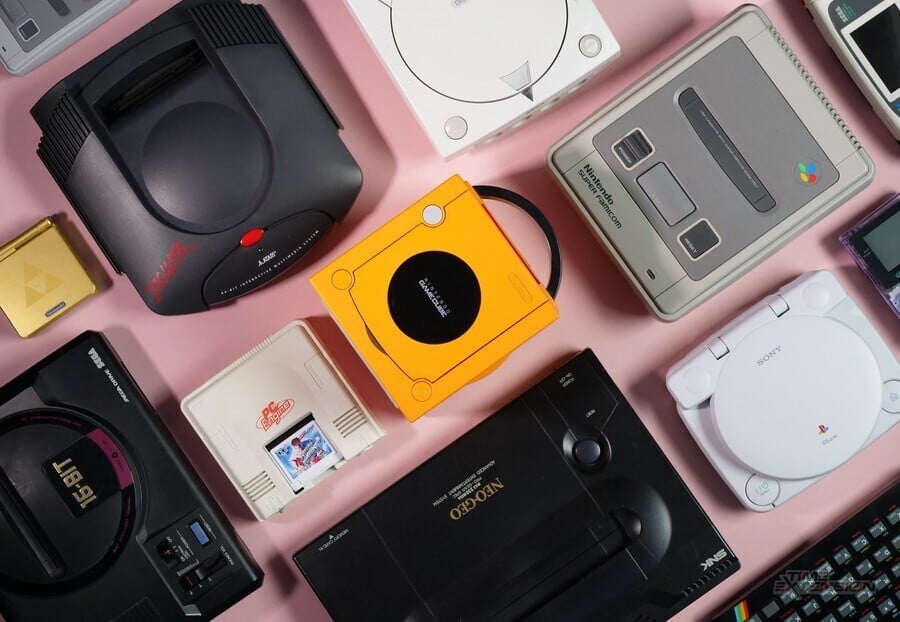
Of course, if you seek the most authentic means of playing old games, then going for the original hardware is the best option – although it does come with some serious caveats these days.
Consoles that are a couple of decades old are already past their intended operational limits, so you might find you have to get them serviced to keep them running; blown capacitors are a common issue, for example. Getting these fixed isn't cheap, but the longer you leave it before taking action, the steeper the repair bill is likely to be. You'll also want to purchase new power supplies for your older systems, as these are often the root cause of hardware problems and can damage your system if not replaced.
Then you have the issue of legacy AV connections not working with your modern TV; unless you have the space for a CRT (which will also require regular maintenance), you'll need to invest in special cables or an upscaler, like the OSSC or RetroTink, in order to get a decent picture on your modern flatscreen.
However, with the right setup and investment, few things match using the original hardware and software. There's an elegance to playing a game on the system it was originally intended for, and although controllers and joysticks have a limited operational life, we're seeing companies create brand-new replacements which are almost as good as the real thing.






Comments 13
Handheld emulation all the way. RG351V + Ayn Odin Pro meet all my needs.
@Muriustar This. Basically, a Steam Deck for the systems that are harder to emulate (with a HDMI to type-c dock to connect to a monitor or TV) plus a cheaper lighter handheld like one of the following: RG351V or 280V (really love that they have type-c ports, one less charger to carry around) or a PSP (or Vita) or 3ds (if you are more into Nintendo) for the more easy stuff.
In the end of the day, even though I love OG hardware I can't stand some of them. I have 3 Game Gears, in one of which I changed the capacitors, and the screen does not work in any of them! My Dreamcast does not play OG disks sometimes but if I make a backup of such disk it plays it (although TBO I am surprised of how great and clean picture Dreamcast provides).
@Belmont Agreed, I only wish the Steamdeck had a smaller form factor (I hope the next iterations do). It was actually my first choice but I was Q2 and got lucky with Ayn.
Also with OG hardware, lugging cartridges is a chore. I still have Vita and 3ds with a hundred cartridges apiece for which I don't really have an emulation option and I'd do away with both in a blink if I could put my libraries on a SD card or SSD.
@Muriustar I have the 64GB version of the Steam Deck and you can use a program called Emu Deck to set up everything. DS, 3DS and the recent Nintendo system work great. I miss my original saves though; it is a pain to move them from my OG cartridges. There is also a beta version of Vita 3000 for the Deck that I have not tried yet.
Sometimes I think that it was a good decision that I went digital in the Vita. It was hard to find games for it here and there were some very good discounts. Basically, I ended up getting a lot of digital PSP and Vita games after all the good old Sony sales and I have all of them in a 256 SD2Vita memory card.
I don't tend to use my original hardware much these days, though my modded MegaDrive and Saturn do put out a pretty decent picture via SCART on a smaller HD TV. I do have a Retron 5, which is decent for what it is, except the NES cartridge slot, which is poor. I have the original Evercade, partly as I wanted a cheaper way to 'own' Midnight Resistance on the MegaDrive.
I own a few of the Mini consoles, though I like the C64 and the A500 mini most as they let you add your own games out of the box. Also like official retro collections and NSO on Switch, as you as can play on a TV or portable, old retro games often look really nice on the OLED, almost replicating the high contrast of a CRT.
I have a mix.
I use original hardware for my N64 and since I have complete Pal N64 games collection I don't need anything else for it.
I also have an original PS1 that is chipped and I have all my games backed up and easily available for it.
I also have the NES, SNES, C64, Megadrive, Turbografx and Astro City Minis as I like the plug n play ease.
I also have both the original Evercade and Evercade Vs and will be getting the Exp as well for the same reasons as above and their quality when it comes to emulation is superb.
Judging from the Polymega Discord the statement about systems going out regularly is a bit of an overstatement.
While I wait for a Polymega I've been doing almost all retro gaming on my phone with an Xbox controller and a clip. Save states have helped me beat a bunch of twitchy stuff. Fast forward is helping me get through some RPGs I didn't have the patience for, and translation patches are opening up some gems I never tried before. Good times all around.
I have my Dreamcast set up so I use that quite a lot also have SNES and MD mini I’m really getting into handhelds at the moment I have a retroflag gpi I love it cos it’s form factor is pretty close to the original gameboy but I’m saving for a steam deck can’t wait to get one
I have held onto nearly all my gaming stuff since I was a kid, so I use a mix. My Mega Drive looks excellent through RGB SCART on my crt tv and pretty good through my flatscreen. My N64 is passable on crt as is my PS2. GameCube looks great through SCART in the same way as Mega Drive, as does Xbox.
Aside from that I was a big fan of the Virtual Console on Wii and have a modded Wii with the entire VC library on it. Through SCART into the crt these play and look fine, though I will adjust the display to 4:3 (though it is a wide screen so they would look better through my other 4:3 crt which is in storage).
I have four of the mini consoles and they are great for nostalgia and with their HDMI outputs they are future proof (though the bizarre decision to limit the PS1 classic to 480p is annoying).
Emulation for me. But a dedicated device. Hoping for a SteamDeck soon. Missed my launch day email when I was away and had to join from the back again. (In some ways just as well, ordered the top model, which is unnecessary. SD card just as fast).
Currently use my Vita which is still a wonderful device, a small actually pocket sized form factor with a stunning OLED panel. Ahead of it's time.
Still have most of my older consoles SMS, SNES, MD, Gamecube, N64, PS1-3, etc. but the hassle of digging them out, setting them up, especially on a modern TV makes emulation FAR more convenient, with a better picture and using a modern controller. Time is important.
I do regret getting rid of my Sony FW900 CRT years ago, it was just taking up so much storage space - as were the Amstrad CPC464 and Amiga - had I known how much money those went for nowadays... but it had a lot of use, mostly for work.
I still use og hardware but I consolidate on BC consoles and I have bought the mini systems. Looking at analogue to extend the life of my collection.
Mine is a bit of a mush mash - original co doors, Wii virtual console and now mini systems. Each have their advantages and disadvantages.
From a copy write perspective some of the replica cartridges can now be of such high quality it can be hard to discern the difference.
I'm still on the fence to get an Evercade. I've also gotten into Retro Achievements, which is a big plus to replay classics you already know, because it gives them a new lease on life. I don't think Evercade supports that.
Show Comments
Leave A Comment
Hold on there, you need to login to post a comment...